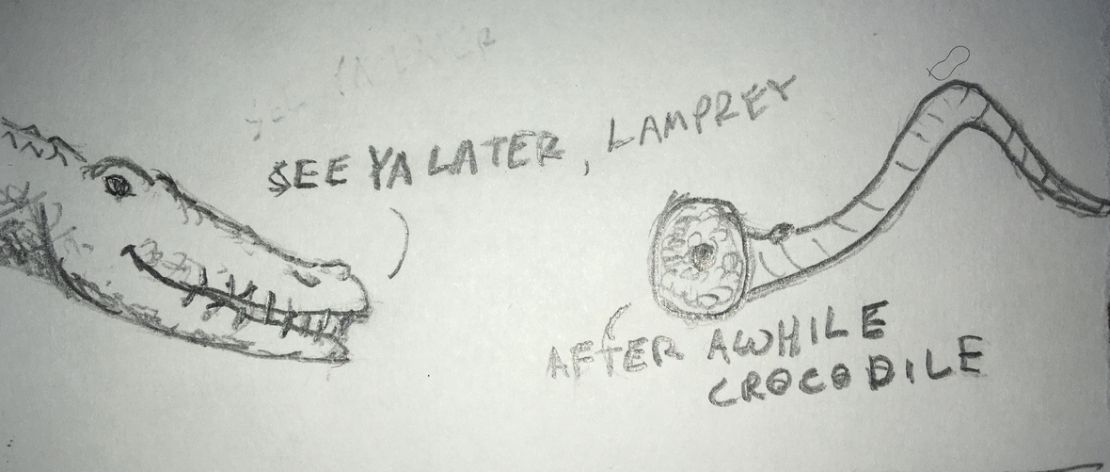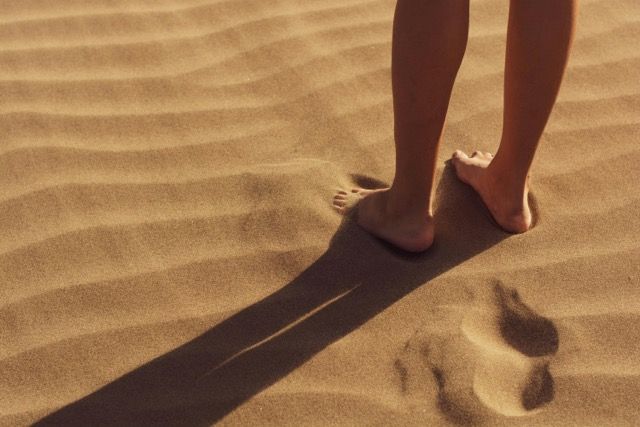Bodies Blog
We view one of our roles as educating our community about topics related to massage and bodywork, and this is our "blackboard" where we share fun and actionable info for people with bodies.

We Are How We Eat
July 1, 2025
Eating is one of life’s great pleasures, and the lack of food one of its great miseries. Since eating is so pleasurable, isn’t it odd that so many of us eat without paying much attention to the food or its quality? We eat too much of what we know does not sustain our health. We eat hurriedly, as though it is just another thing to get through on the way to the next thing. And we try to maximize multitasking while we eat - driving, reading, texting, putting on make-up, and sometimes eating-driving-texting-reading-makeuping - you know you’ve seen it on I-5!
Let’s try a "mindful eating" experiment (this phrase refers to what we eat, how rapidly we eat, and what we pay attention to while we eat): At your next meal, make eating the only thing you are doing. Sit in silence without distractions. Yes, even if it is a shared meal, make the choice not to speak. Focus your attention on each bite. The taste - what are the various flavors? Where exactly do you “feel” the flavors? Do the flavors change as you chew and as your enzymes begin to digest the food? What about the textures and the feeling of chewing? You might try closing your eyes. Do you find yourself enjoying the food more? Are you more aware of the quality of the food you’ve chosen? What do you notice your mind doing or wanting to do? You may find it difficult to slow down and complete each chewing cycle before going for the next forkful. It may be difficult not to pick up your devices of distraction. You may feel that you are “wasting your time” sitting in silence just eating. These can be helpful insights into our inner world of rushing, distracting, and avoiding.
Eating mindfully can be a beautiful and evolving lesson, facilitated by your body. Not to mention the health benefits of being more conscious about what we eat, how much we eat, and how hastily we eat. Yes, we are what we eat, but let’s take it another step: We are how we eat.

The Leg Bone’s Connected to the Ankle Bone - By a Ligament!
June 20, 2025
Did you know that your body has a diverse collection of “connective tissues”? This unlikely assemblage features a number of star players that you’re surely intimate with. Cartilage, tendons, ligaments, bones, and adipose (fat) are connective tissues. Many authorities also squeeze blood and lymph into this category.
Tough collagen fibers are abundant in many connective tissue types, including ligaments which form connections between bones. Ligaments must strike a fine balance, providing firm and resilient connections while allowing some flexibility. They must have an effective and healthy collagen matrix and must also be the right size and shape for the body.
Some people have very tight and firm ligaments and others have loose and stretchy ligaments. In the first case, a person is very physically inflexible and, in the second a person is flexible in the extreme.
Injuries, surgeries, and other conditions factor into the functioning of ligaments, too. Someone who has sprained an ankle repeatedly may develop loose ligaments making them prone to further sprains. Someone who has had surgery on a joint may have scar tissue that prevents ligaments from allowing normal range of motion. Ehlers-Danlos syndrome is an inherited condition that results, among other things, in highly flexible joints.
Where on the spectrum do you reside? Are you highly flexible with a tendency to dislocate joints? Are you relatively stiff such that you spend yoga classes watching other people stretch in ways inconceivable to you? Are you somewhere in the middle? Have you had injuries that result in some of your joints becoming limited or too-unlimited in their movement?
This knowledge has practical ramifications: Generally speaking, those with loose ligaments benefit from strengthening exercises to build heftier muscles that can help ligaments support joints. Conversely, those with tight ligaments benefit from stretches to support and expand joint mobility.
Photo Credit: Ketut Subianto

Jawing about the Jaw
June 5, 2025
Where would we be without our jaw? We might be cruising in the ocean and rivers like the jawless lamprey - an ancient form of fish. But nay! We’re land mammals with diverse diets and sophisticated brains and social structures, so we need our jaw to help us chew, express, and communicate.
The jaw is hinged in front of the ear and is controlled by muscles on your skull and in your face and neck. The biggest and strongest jaw muscle is the masseter, situated beneath your cheek. Humans can exert about 70 pounds per square inch (psi) of pressure during normal chewing. By comparison, the strongest bite force ever measured was that of the Nile crocodile: about 5,000 psi.
Seeing that the jaw performs a variety of important tasks (simultaneously for those who talk while they chew) when something goes wrong it becomes a big issue in a hurry. Jaw tension is frequently caused by stress and overuse, but there are also a variety of conditions that cause jaw pain such as a malformations, arthritis, and even Tetanus. In my practice I have had many clients whose jaw became over-tight, which is connected to jaw dysfunction, pain, and cascading effects in the neck, head, teeth, even shoulders.
Here is a simple technique for alleviating jaw tension: Find a comfortable position. Take several smooth and even breaths, allowing your jaw to loosen and your tongue to rest at the bottom of your mouth. With the fingertips of both hands, gently massage your masseters, starting at your cheek bones and gliding downward to the bottom edge of your jaw. Do this gliding motion several times, allowing your jaw to become slack and your mouth to open. Reduce your pressure or stop if you feel any pain. For extra credit, during your out-breaths say a gentle "aaaaaahhhhhh". You're not trying to create any particular sound or note, just expressing gently with your vocal chords engaged.

Should I Stretch, Strengthen, or Loosen?
May 22, 2025
As with most vexing questions, the answer is not simple. As a jumping-off point, let's begin with this fact: In order for our bodies to function well we need some stretchiness, some strength, and some ability to relax.
Let's use the breath as a beautiful example. If you'll indulge me, please look away from this screen for a few moments (you can do it!) and take some easy breaths . . .
. . .
. . .
Within each breath you'll notice that you need a bit of strength to flex your diaphragm and take-in air, your ribs and surrounding soft tissues need to stretch to allow the air to enter your lungs, and you need to relax your diaphragm to allow the air to pass out from your lungs into your surroundings. Try it again and notice. . .
. . .
. . .
Of strength, stretching, and relaxation, the most overlooked of the three is the third, which perhaps shouldn't surprise anyone since we live in a society full of intense people doing intense things with intense feeling.
So, let's begin with relaxation: We are wonderfully dynamic beings. When one part of our body needs to shorten (which requires strength), the opposing side must relax to allow for the shortening. Think of your bicep and tricep muscles: when you want to flex your elbow your bicep must engage and your tricep must relax. If your muscles can't relax and "be floppy", the usefulness of stretchiness and strength diminishes. When you see athletes shaking out their muscles, one thing they are doing is encouraging their muscles to relax and be floppy.
Strength and stretching are more familiar concepts in the world of conditioning. Muscles and soft tissues that are chronically shortened can often benefit from stretching to allow the body to move efficiently and healthfully. Muscles that are underused due to habits, posture, or a lack of awareness can often benefit from strengthening.
People with "loose joints" tend to benefit from expert-informed strengthening, while those with "tight joints" tend to benefit from expert-informed stretching.
Your body and your body's history are unique, and thus your needs in terms of strength, stretching, and loosening are also unique. A rule of thumb is that some combination of all three is better than focusing only on one or two. Another rule of thumb is: if it hurts don't do it, and if the pain worsens over time, seek medical advice. (Note: sometimes stretching and strength training can be intense or even momentarily painful, but it should always go away once you stop the exercise.)
Photo Credit: Wolf Art
Our Earthly Platform - Our Feet
May 8, 2025

These days the world seems to be shifting under us. What an opportunity to assess our most direct physical connection to the Earth: our feet. How do you picture your feet? Are they soft, pliable, stiff, or firm? Are they solid and supportive or wobbly and unreliable? Or do you think about your feet at all?
Feet are magnificent works of evolution and conditioning, each containing 26 bones, a large number of muscles for movement and stability, and an array of ligaments allowing the right kind of movement and preventing the wrong kind. These structures are all present at birth and are highly conditioned by the way we stand, walk, run, etc.
Everything balances upon our feet when we are upright, so our entire alignment from ankles to skull is determined in large part by how we stand and move on them. Getting familiar our feet, therefore, is helpful for understanding posture and movement, and ensuring efficient and healthful movement habits.
When you stand, notice where you feel your weight in your feet - at the heel, the ball, the outside or the inside. Are there differences between the weight in your feet? Do you put more weight on one or the other? When you balance on one foot (using a hand-hold if you need support) notice how your weight shifts to different parts of your balancing foot. Try walking slowly and notice your weight transfer from heel through arch, ball and toes. Experiment with different modes of walking noticing how the contact of your foot with the ground changes. Are there more and less comfortable ways for you to walk? Using experimentation and curiosity you can learn about your feet and how they function and stand on firmer footing, literally if not figuratively.
Now, then. Need a comedy break? Monty Python's Ministry of Silly Walks sketch comes to mind. Imitate with caution.
Photo credit: Luis Ruiz